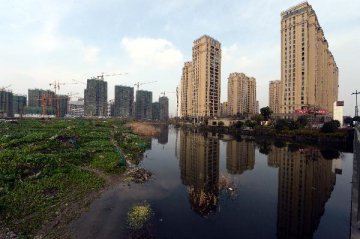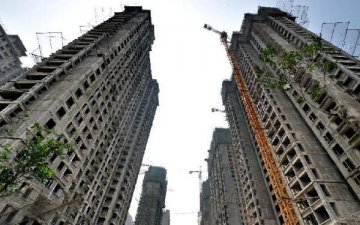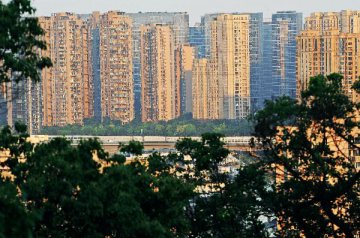
According to the latest data released by China Index Academy (CIA) on March 15, the overall trading volume of properties in 29 major cities monitored last week decreased 1.8 percent from the previous period. Tiers 2 and 3 cities saw different decreases. Based on the inventory, the total inventories in the 14 major cities monitored declined 1.97 percent from the previous period.
The Economic Information Daily March 16 reported that based on the CIA’s statistics, 16 of the 29 cities monitored saw declines from the previous period, accounting for 55 percent. Compared with the same period of last year, the total trading volume of the 29 cities plunged 26.0 percent. 19 cities recorded decreases year on year.
Compared with the previous period, the trading volume in tiers 2 and 3 cities dropped slightly while tier 1 cities saw slight increases. However, the trading volume in cities of all tiers declined from the same period of last year with tiers 1 and 2 cities recording significant decrease of over 30 percent.
Among key cities, Wuhan, Shanghai and Guangzhou were top 3 in terms of the trading areas. In terms of the year-on-year data of the total trading volume, all cities recorded decreases except Nanchang and Guangzhou, which recorded an increase of 54.78 percent and 19.30 percent, respectively. Shenzhen saw the biggest decrease of 78.33 percent, followed by Suzhou with a decline of over 70 percent year on year.
As for inventories, the total inventories of 14 major cities monitored by the CIA declined 1.97 percent. Only Shenzhen witnessed an increase of 0.19 percent from the previous period. The remaining 13 cities saw different decreases. Bengbu recorded the biggest decrease of 4.64 percent, followed by Guangzhou with a decrease of 4.36 percent.
It is noteworthy that many cities introduced stricter regulations on the properties market last week. More cities introduce stricter restrictions on housing purchase and loans. Chongli District of Zhangjiakou and Nanchang further tightened policies on housing purchase. Chuzhou City in Anhui Province introduced restrictions on loans for housing purchase. The minimum down payment for the second and third houses was raised to 40 percent and 60 percent. It will support housing purchase for rigid demand to curb the excessive growth in housing price. Sanya City further strengthened the regulation on the property market. It prohibits the transfer of houses under pre-sale and the down payment for the second house was raised to no less than 50 percent. It also suspends the issuing of loans for the purchase of the third house.
Based on the trend of policies, different cities will introduce different policies, indicated Zhang Hongwei, director of the research department of Tospur.
“However, core tiers 1 and 2 cities will not loosen the regulation on the properties market on the whole. The policies on the property market and the highlights in the market will focus on tiers 3 and 4 cities. Under the strict regulation on the property market in tiers 1 and 2 cities, the key task will be how to make the properties market in tiers 3 and 4 cities a balancer in the stable and healthy development of the property market across China.” Zhang indicated.
As for the trading volume in the property market, take Beijing as an example, local property market has entered into the post-development era with inventory houses after years of development, indicated Hu Jinghui, vice president of bacic5i5j.com. “As a result of the shrinking market for new houses and the stricter regulation on the property market, the property development in Beijing and other cities will see limited recovery.”
Translated by Star Zhang
























Latest comments